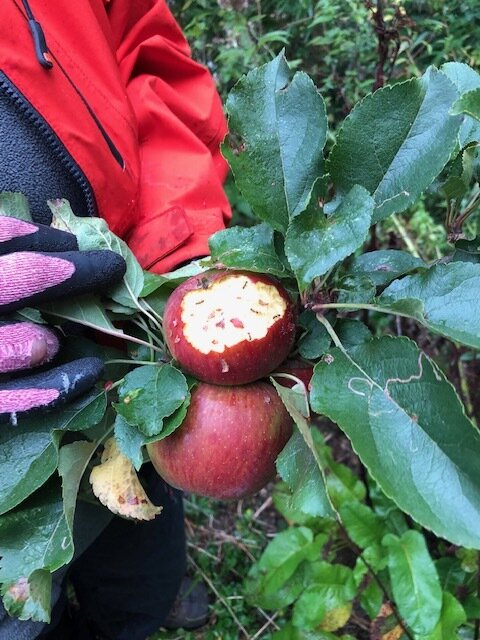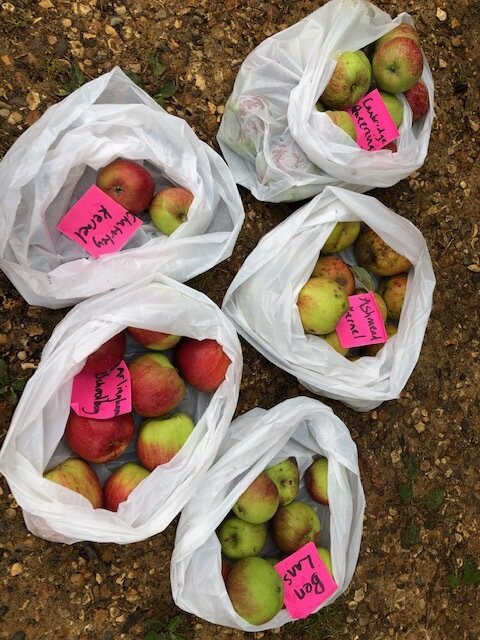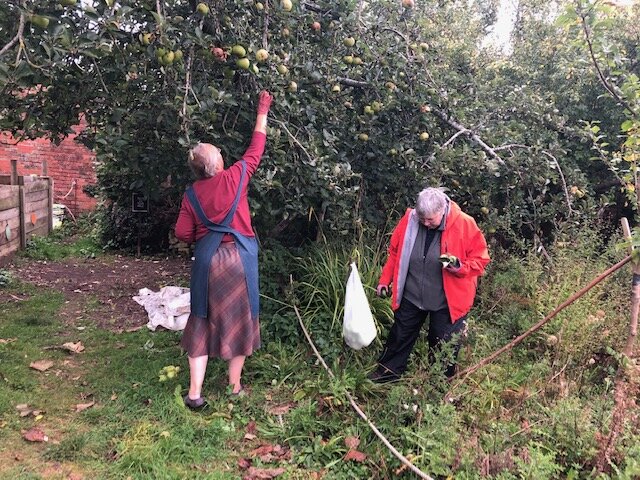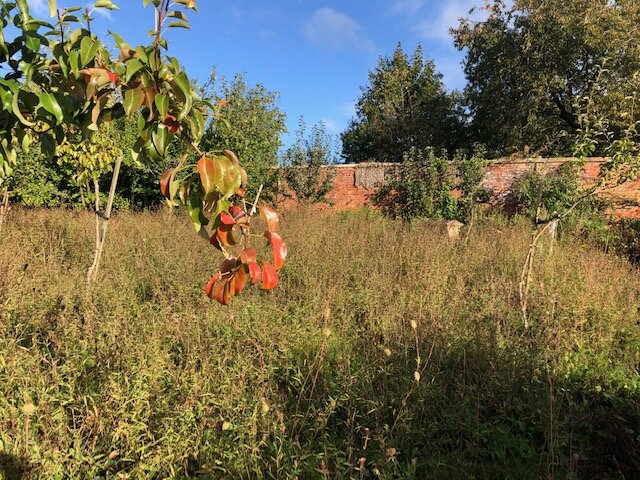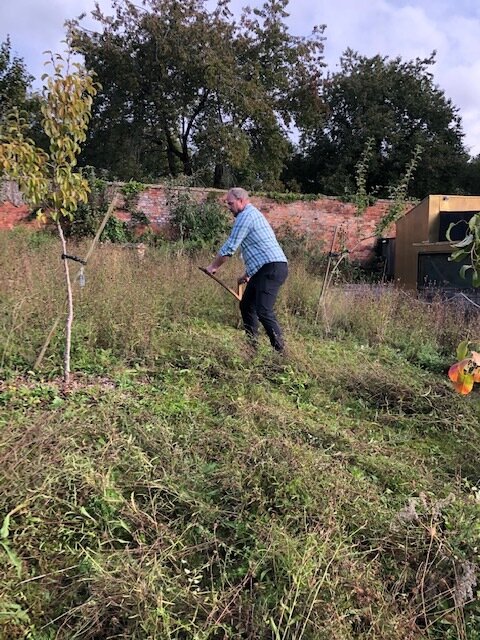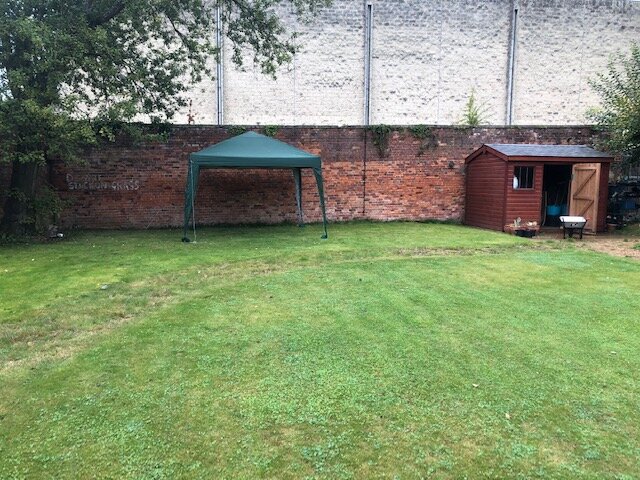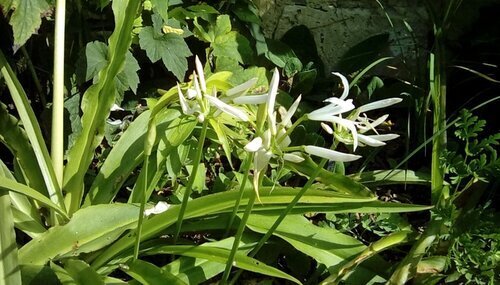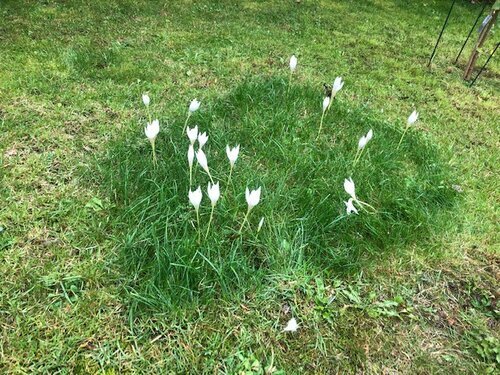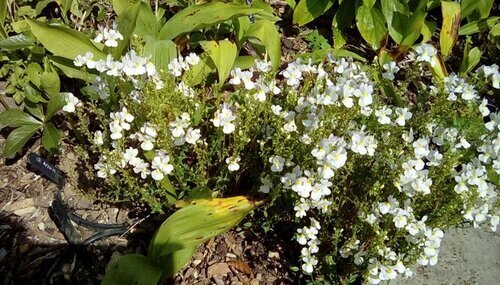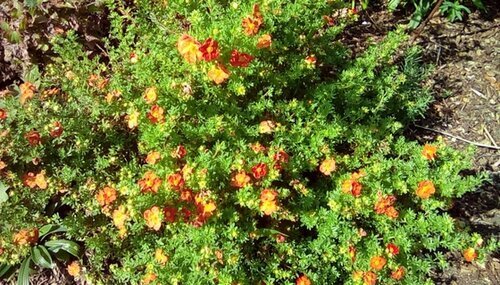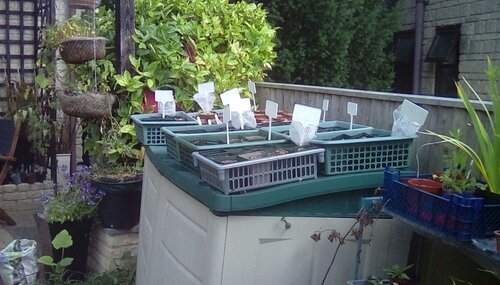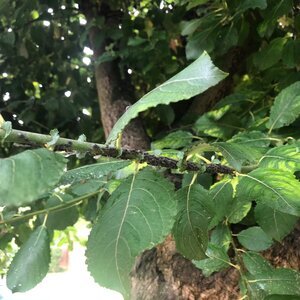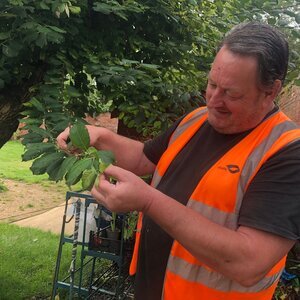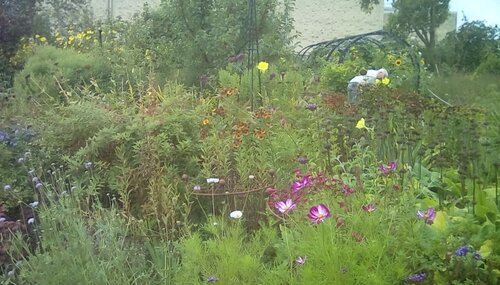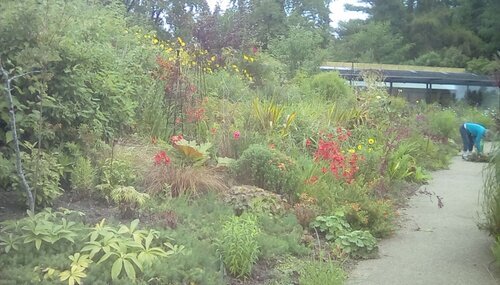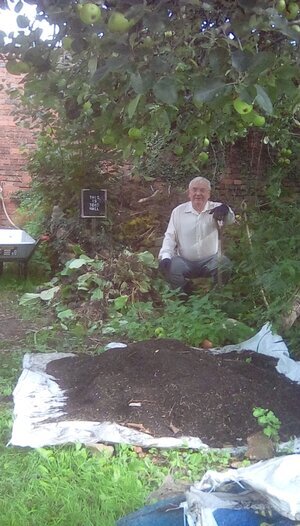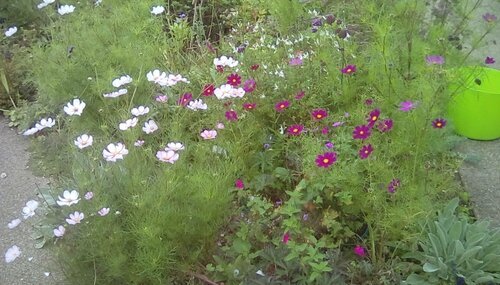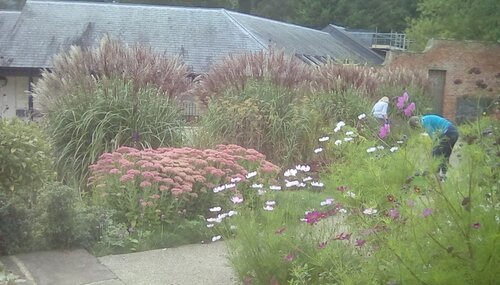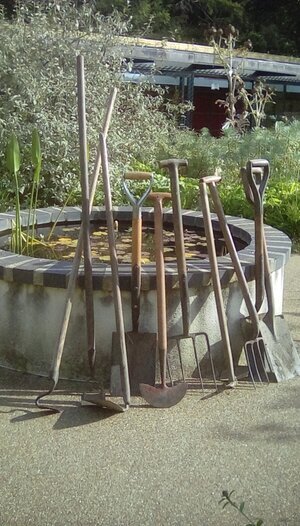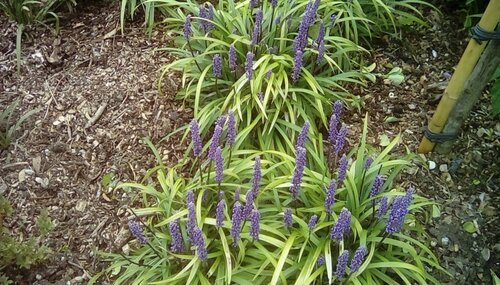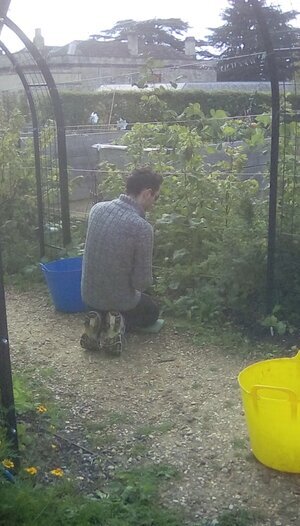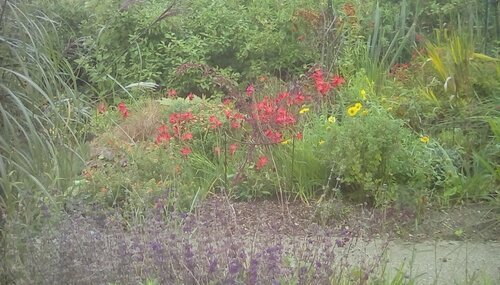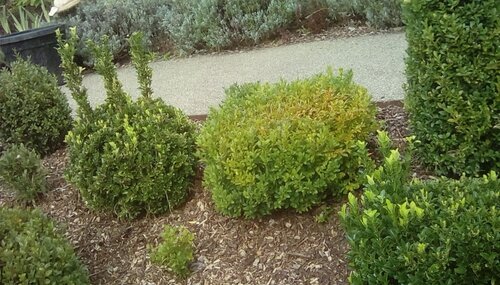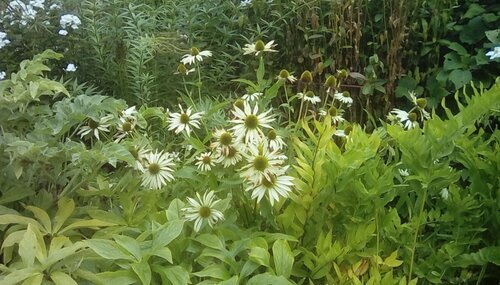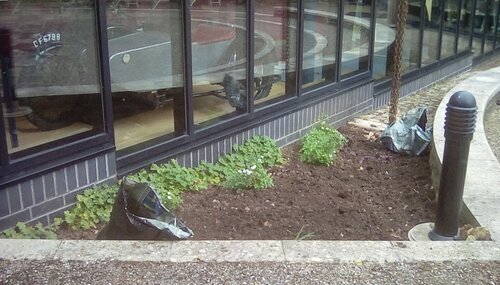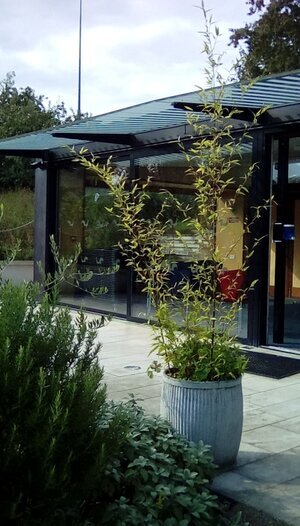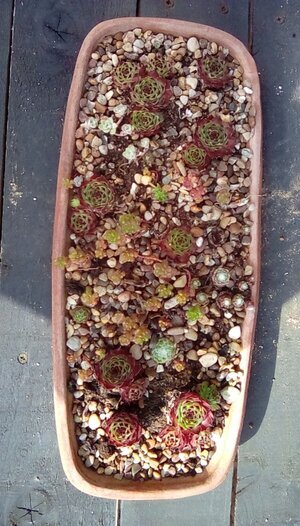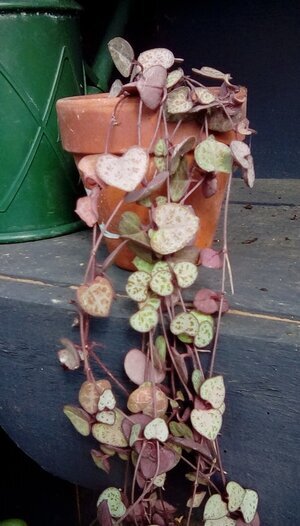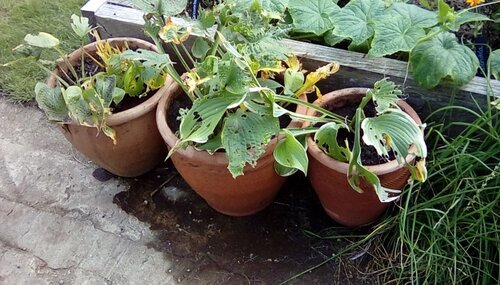Monday 23 March: After all the rain, and days spent weeding in the Garden, the Monday volunteers turned out in force to mulch the borders. We managed to cover almost all of them, planning to return on Weds 25th to complete the Bonkers Border. Thanks to the threat of Covid 19, it never happened. The Garden gates were locked. The Museum and Garden were now in Lockdown. The Gardeners were locked out!
Weeks passed. The MIP Gardeners all settled to projects in their own gardens. We swapped texts and emails and photos and sent each other advice on plants. Ruth set up a WhatsApp group for us, and then, Gardeners’ ‘Zoom’ meetings, where we ‘toured’ each other’s gardens, which were looking very good! Sarah sowed vegetable seeds; Cleo sowed seeds for bedding; Caroline began the mammoth task of cataloguing every plant in the Garden, advised by a local garden historian; and Geoff amazed us with stories of his 30yr old amaryllis, and his giant, two-storey high delphinium! And we fretted about the Walled Garden, as the sun came blazing down and the ground began to dry out. Some of us, on our ‘Boris Walk’, went into the Park and peered through the old iron gate at the orangery to report what we could see: Ruth took this photo through the gate It was agonising not to be allowed in; even worse for the few Over 70s in our gardening team who, due to restrictions, couldn’t even walk in the Park.
11 April, Easter Saturday. The Museum Manager and his son set up the hose and watered the Garden, sending photos; the tulips were all in flower and looking lovely! We posted the images on our gardeners’ Whats App, and emailed them to others; Cleo chose an image for the Walled Garden Instagram page; and Marion posted the first of the photos out to The Friends. During their routine checks on the Museum over the following weeks, Fran and Kevin sent new photographs. The colours in the Garden were wonderful, the new tulips gorgeous! But the Garden was still sizzling in the heat. Then, on 22nd April, while the Garden gently fried, the ‘leaky hose’ watering system was set up. Just in time……
We have beautiful photos of the Garden in April, emailed out to all the Friends by Marion. The euphorbias turned lime green; the meadow was pink with ragged robin and campion; lupins shot up; the Mediterranean border was a joy; blackbirds built a nest in the plant stall ‘holding bay’ racking, and soon there were five eggs. We all were cheered by the images. What a special place we have made, between us all. And then, in all their glory, the irises began to flower… with none of us there to enjoy them.
If you’d walked past the Museum at the end of April, you’ll have seen the wisteria, a mass of sweet-smelling purple; but inside the Walled Garden, a white-flowering version was stretching along the wall, almost dripping flowers. The plants were all enjoying the unusually hot weather. The Museum Manager recorded a short video of the tranquil Garden, with birdsong as the soundtrack and shared it on You Tube.
Monday 11 May - The Museum Manager began to risk assess access to the Garden for some garden volunteers, now all anxious that at a time of year when everything grows, the Garden had been left untended. Safety rules were drawn up, a rota devised, and on, and on..
Monday 18 May, nine weeks since Lockdown, all the Monday gardeners below the age of 70, one by one, came for a 25 minute ‘tour’ in turn to view the Garden. It looked lovely, better than we had dared hope. We sent the news back to the others - the Garden was OK! Work began on the 20th May. First, we watered, and watered, and watered. The earth was bone dry. Then close-up inspection revealed the results of lack of attention. Plants had survived the heat, but hadn’t grown as much as they should have done. The ivy-leaf hydrangea was in a sorry state. There were weeds….quite a lot of them! Plants had withered and died at the plant sale and plant holding bay. The Eryngium ‘Miss Willmott's’ Ghost’ had gone absolutely mad and filled the Stellata border with seedlings. Two people at a time were now allowed into the Garden, and to allow everyone to have a chance to be there - nine gardeners in all - we established a rota system, giving each person a 90 minute slot (too short, they all said, but at least they were in!). Ruth, having introduced most of us to Zoom, now instigated an online Doodle Poll to help us to keep track of who was coming in to work in the Garden, and when. A pair of blackbirds followed us about, indignant that we were daring to come into their garden! But they enjoyed our weeding and digging as we disturbed the worms for them! The bees didn’t mind our being there either. By the start of June, we had made headway. As Govt safety advice was updated, now we were allowed one extra person per session. The vegetable seedlings, protected from slugs by hundreds of crushed-up eggshells, were planted into a newly-manured bed at the pergola. The herb beds and raised beds have had a ‘makeover’ and growing well, our own organically produced edibles!
15th June - Things were changing rapidly and now up to four people could work any one time. This made a huge difference! It was possible to have enough time to complete a task. Then from 22nd June, finally, our four Over-70s gardeners were able to join us. Hooray! Early July - The lawn is cut, the hedge is trimmed, the weeds are under control, the mulching continues, the sale plants are nearly ready, the front border of the Museum is rescued: huge amounts of energy have been expended. The Walled garden is now ready for human visitors again.
We, the gardeners, are all very grateful to Fran and to Marion for circulating photographs of the Garden during Lockdown, keeping in touch with all our Friends and supporters with positive news and beautiful images and so playing our part in the Museum’s online presence. We lost nearly a whole season in the Garden, but it was captured in these images. We feel very lucky to be back in our lovely Museum Secret Garden - and, as one volunteer said to me,"The Garden needed us; and we needed the Garden". We hope to see you all there, soon. The Walled Garden - which has now reached the notice of national organisations and specialist reporters - has its own Instagram account, started and regularly updated by Cleo Mussi, the garden's designer. So, if you enjoy Instagram or know others who do, visit http://www.instagram.com/walledgardenstroud


